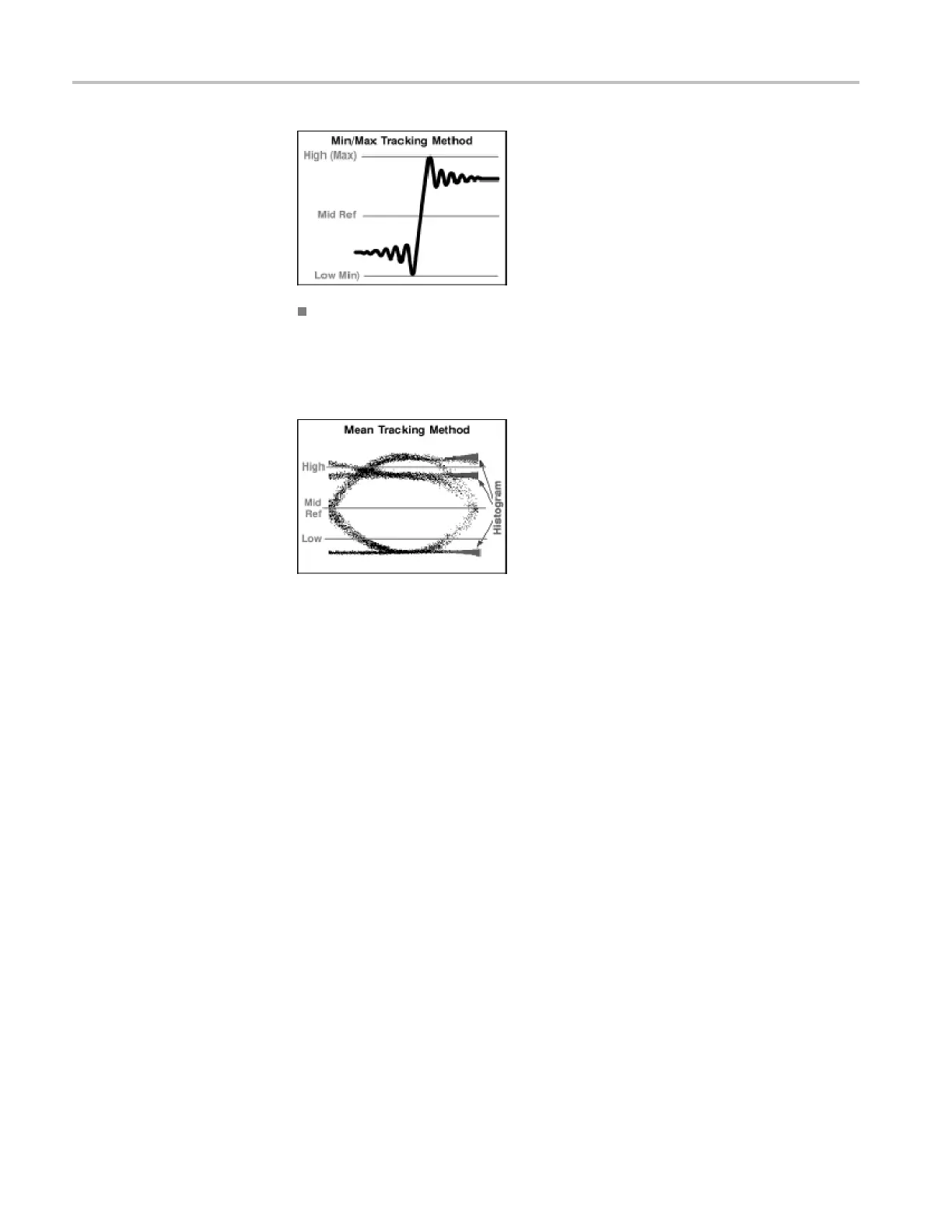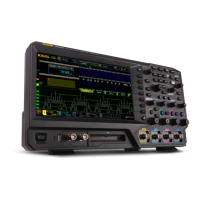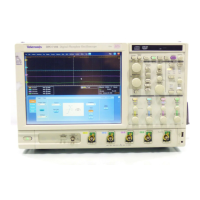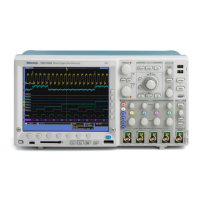Commands Listed in Alphabetical Order
MEAN is commonly used for eye diagrams. The mean method calculates the
high value as the mean value of the region above the mid reference and the
low value as the mean value of the region below the mid reference. See figure
below. The
mean is computed only over the eye aperture - typically the center
20% of the NRZ eye, or the center 5% of an RZ eye.
Examples
MEASUREMENT:MEAS2:SOURCE1 :HIGHLOW:METHOD MINMAX selects the
Min/Max method of determining the high and low values used to take
meas
urements defined by Meas2 on the Source 1 waveform.
MEASUREMENT:MEAS1:SOURCE1 :HIGHLOW:METHOD? might return
MEAS
UREMENT:MEAS1:SOURCE1:HIGHLO W:METHOD MINMAX
, indicating that
the Min/Max method of calculating the High/Low levels is used for Meas1 on
the Source 1 waveform.
ME
ASUrement:MEAS<x>:SOUrce<x>:HILow:TRACk:HIGH:ENABle
This command sets or queries whether tracking of the high value for a specified
measurement on a specified source waveform is automatically done by the
i
nstrument. The measurement slot is specified by x, which can be 1 through 8; the
source is specified by x, which can be 1 or 2. Sending this command is equivalent
to specifying a me asurement slot (such as Meas 3), selecting a source (such as
Source1), and then checking the control box for Track High in the in the Hi/Low
pane of the Measurement Setup dialog box. (If tracking is enabled, the instrument
automatically calculates the high value using the method set with the command,
MEASUrement:MEAS<x>:SOURCE<x>:HILow:METHod.)
2-244 DSA/CSA/TDS8X00/B Series Programmer Manual

